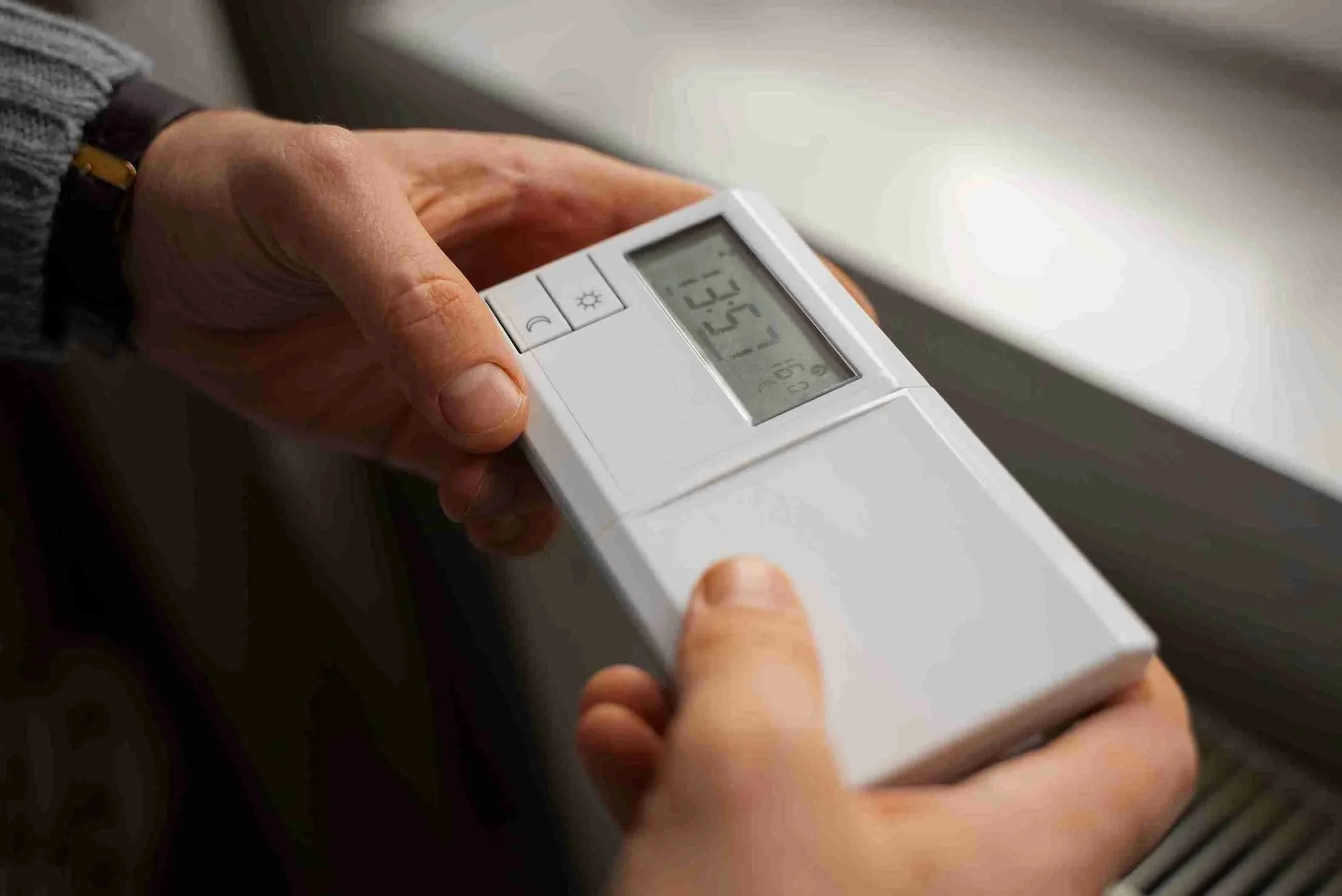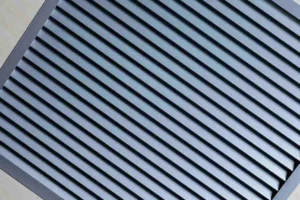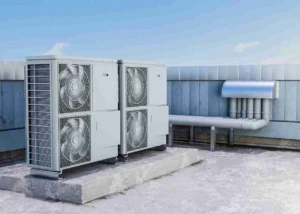When you see aux heat on your digital thermostat, it means your heating system is using auxiliary heat to quickly raise the temperature in your home, especially if the primary system isn’t keeping up. While this can be useful in some situations, it might raise a question—is the aux heat setting bad? The reality is that the aux heat function isn’t inherently bad, but if it’s turning on frequently, it could indicate an issue with your heating system.
When this happens, you may be relying on the heat pump less, and the aux heat takes over, which may not be as efficient or cost-effective in the long run. It’s essential to ensure that everything is working properly with your system. If you’re having problems with your heater or the aux heat function, you may need to contact heating specialists from a reputable business such as Lex Air Conditioning & Heating.
These pros can provide you with an accurate diagnosis of the problem, whether it’s a malfunctioning component or a bigger issue within the system. Getting it checked out will allow you to enjoy the comfort of your home without worrying about unexpected heat cycles that could be costing you more money.
Is It a Problem When Auxiliary Heat Comes On? – The Short Answer
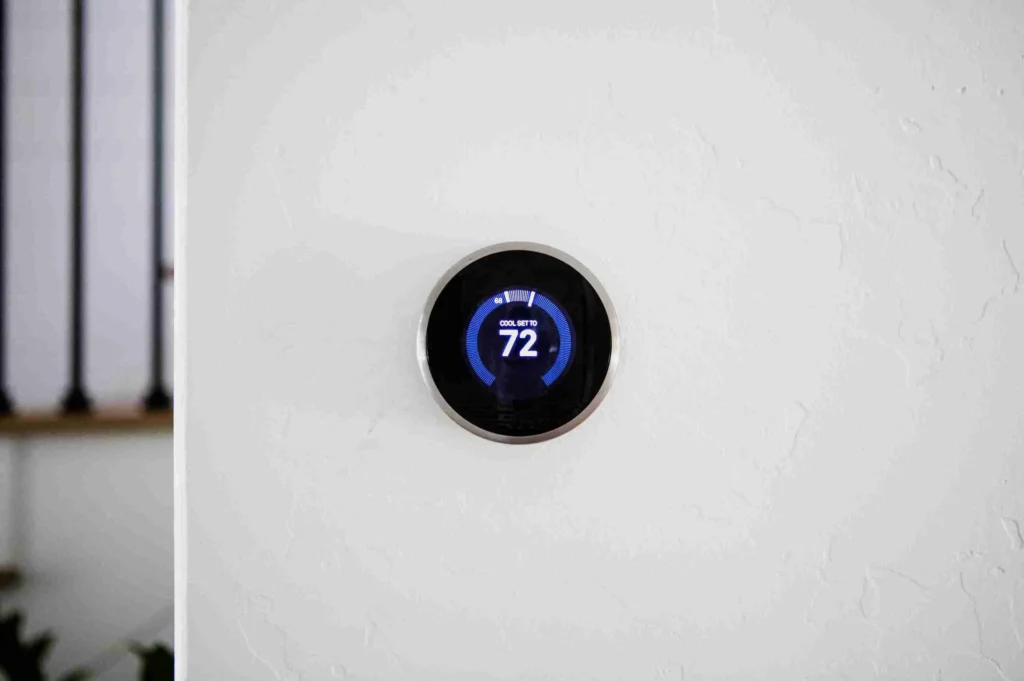
What Is Auxiliary Heat?
When the temperature outside drops to low levels, your regular heat pump might not be enough to keep your home warm. This is where auxiliary heat, also known as backup heat or emergency heat, comes into play. It acts as a supplemental heating source, giving your system that extra boost to maintain the desired warmth and comfort during extreme cold weather.
While it can be necessary for ensuring your well-being in harsh conditions, it’s important to understand that auxiliary heat uses more energy than regular heat, which can cause a rise in your energy bill. The system typically switches to auxiliary heat when the heat pump can’t operate efficiently due to outdoor temperatures being too low.
While it’s not inherently bad, overuse of auxiliary heat can make a significant impact on your heating system’s efficiency, so it’s crucial to monitor and avoid switching to aux heat unnecessarily.
How Heat Pumps Keep Your Home Comfortable
A heat pump is a versatile central heating system designed to keep your home warm during the winter and home cool in summer, spring, and fall. It works by using heat energy from outside to transfer heat into your living spaces. Even in cold air, the heat pump can still operate, though if it gets too cold outside, it may rely on a supplemental heat source, also known as auxiliary heat. This backup system ensures your home stays comfortable, but it can consume more energy.
How Does Your Heat Pump Work?
When the thermostat is set to heat and the temperature inside drops, the heat pump may struggle to generate enough heat, causing the auxiliary (aux) heat to kick in. Aux heat uses electric resistance strips to provide extra warmth, helping the heat pump maintain a comfortable temperature. However, this consumes more electricity, increasing energy usage and slightly reducing efficiency. While aux heat ensures warmth during colder conditions, it signals that the heat pump is working harder to reach the desired temperature.
Is It Bad if Auxiliary Heat Comes On?
Auxiliary heat activates when the primary heating source can’t reach the set temperature, often due to very cold outdoor conditions or thermostat settings. It helps maintain warmth and ensure comfort.
Increased Temperatures on Thermostat
During the winter, if you increase the temperature on your thermostat drastically, the system will likely recognize the need for a rapid boost in warmth. However, when the heat pump can’t produce enough heat quickly enough to reach the set temperature within a reasonable amount of time, it will automatically switch to auxiliary heat mode. This mode helps to boost the warmth by providing extra heat until the main system can catch up.
While this is a normal response, the auxiliary heat is usually less efficient and may lead to higher energy consumption. But, depending on how quickly the heat pump can reach the desired temperature, it could be a necessary step to ensure comfort. The key here is that the system is working to manage the heat requirements within the given time frame.
Defrost Mode Works in a Heat Pump
When the outdoor unit of your heat pump gets too cold, it can cause the coils to freeze, making it impossible for the system to draw energy from the outside air. This is where the defrost mode comes into play. During this mode, the heat pump enters a temporary cooling cycle to remove the frost from the outdoor coils.
While this may cool the indoor air, it’s not a problem because the aux heat activates to maintain a warm, cozy indoor environment, keeping the temperature comfortable even if it’s freezing outside. The auxiliary heat ensures that your home stays cozy while the system is working to clear the frost, allowing the heat pump to resume its normal function.
Extremely Cold Weather
When the outdoor temperature drops and it gets particularly chilly, you might notice that your heat pump isn’t performing as efficiently. Heat pumps are designed to extract heat from the outdoor air and bring indoors, but as the air gets colder, the efficiency of the heat pump drops. In these conditions, aux heat mode may turn on to support the system and keep your home warm.
While it’s not necessarily a bad thing, it indicates that the system needs extra assistance to maintain comfort. From my experience, this can be an expected response during severe cold spells, ensuring your home stays at the right temperature without compromising on efficiency too much. It’s a helpful mechanism, but it can also signal that the outside conditions are especially harsh.
Emergency Heat Activation
When auxiliary heat kicks in, it means that your thermostat has switched to Emergency Heat mode, which is manually activating the auxiliary system. In this mode, the heat pump is bypassed completely, and you’re relying solely on the backup system. This is typically a useful function if the heat pump is experiencing issues or undergoing maintenance, as it ensures your home still gets heating.
However, you likely won’t need to use this setting unless there’s a specific problem. The process of switching to Emergency Heat can provide peace of mind during unexpected circumstances, but in normal operation, it’s generally better to rely on the main heat pump system.
System Malfunction
When your heat pump system activates auxiliary heat, it could be a sign of a malfunction. A faulty sensor or thermostat miscommunication can trick the system into thinking it needs extra warmth. Sometimes, a mechanical issue causes this, leading to the auxiliary heat turning on unnecessarily. If this happens, it’s best to call in a professional to fix the problem and get the right help.
How to Prevent Auxiliary Heat from Turning On
Auxiliary heat can increase energy costs, but it’s normal in certain situations. To reduce its use, adjust the thermostat slowly—by a degree or two at a time—to give the system time to warm up. In colder weather, small adjustments help the heat pump operate efficiently, reducing reliance on auxiliary heat. Regular maintenance is key to ensuring your system works efficiently, saving on energy costs while maintaining comfort.
Routine Heat Pump Maintenance
When your heat pump switches to auxiliary heat, it can feel like a red flag, but it’s not always a sign of trouble. In fact, this switch can happen when your system is working hard to maintain a comfortable indoor environment during extremely cold weather. However, to keep your heat pump running efficiently and avoid unnecessary wear and tear, heating maintenance is essential. Periodic checks and tune-ups can help your system operate at its best, saving you from costly repairs down the line. I’ve seen first-hand how routine maintenance can make a big difference in extending the energy-efficient life of a system, keeping it working properly for years.
At Lex Air, we recommend an annual maintenance schedule to inspect critical components like electrical connections, refrigerant levels, and controls. Doing so can prevent minor issues from growing into more significant problems. Regular maintenance is an effective way to reduce energy consumption and ensure your heat pump is prepared to provide heat throughout the winter. Whether it’s for your air conditioning system in the summer or your heat pump in the winter, staying on top of heating maintenance guarantees your system is always working properly and ready to beat the heat when needed.
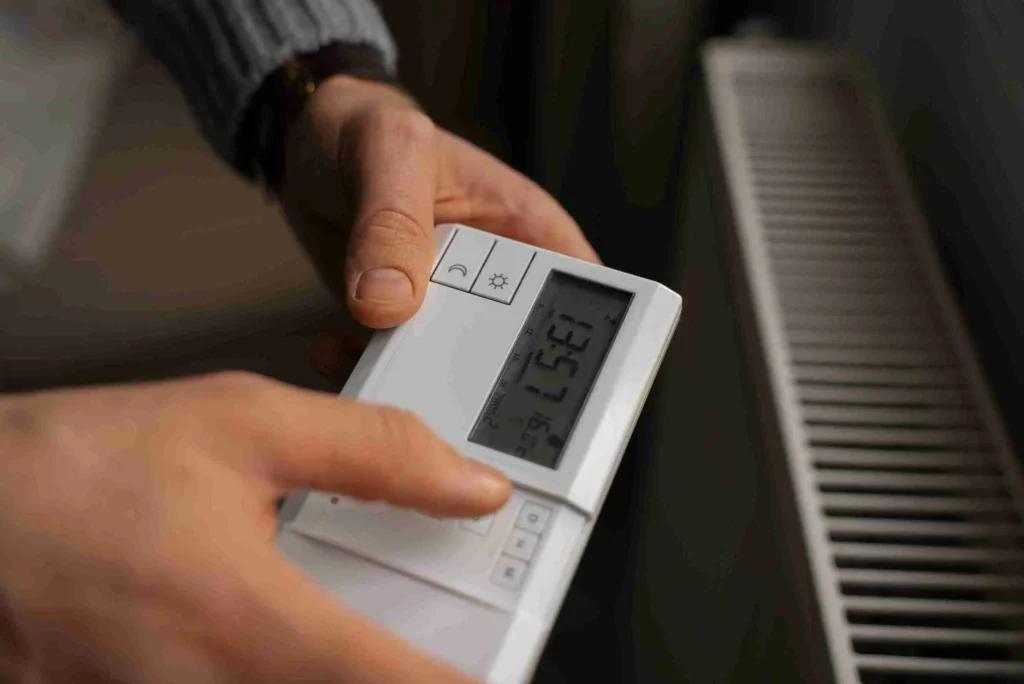
Signs That Auxiliary Heat Isn’t Working Correctly
When the auxiliary heat comes on in your heat pump, it may be a sign that something is not working as it should. While auxiliary heat serves a purpose when temperatures drop drastically, frequent use can indicate underlying issues that may affect your HVAC system’s performance and efficiency. Here are some signs that your auxiliary heat may not be functioning correctly and what you can do about it:
- Higher electricity bills than normal: If you’ve noticed a sudden spike in your electricity bill, it could be because the auxiliary heat is running more than it should. This can happen when the system is not effectively maintaining the temperature or energy is being wasted unnecessarily. It’s a good idea to check if the auxiliary heat is constantly working and not just during extreme cold.
- Excessive heat when it’s hot outside: AUX heat should not be running when the outside temperatures are warm. For example, if the temperature is above 35 degrees Fahrenheit, there’s no reason for the secondary heating to be on. If this happens, you might want to check your thermostat settings. A system that is running auxiliary heat when it’s warm inside can cause unnecessary energy usage, leading to higher costs.
- Thermostat not responding correctly: One common problem is when your auxiliary heat doesn’t switch off even after you adjust your thermostat. If you turn the temperature down to a comfortable indoor level, the auxiliary heat should turn off, but if it doesn’t, it could mean there’s an issue with the sensor or the electrical connection. This could lead to excessive energy consumption and higher costs.
- Indoor temperatures too high: If your home feels too warm—say, over 80 degrees—and the auxiliary heat is still running, this could indicate a problem with the system’s ability to regulate temperature. In such cases, it’s best to inspect the thermostat for potential issues and ensure it is set to a reasonable temperature.
- Inability to switch to cooling mode: Another sign is when your HVAC system won’t switch to its cooling cycle. High-tech systems can handle both heating and cooling, but if the cooling mode is not working, it might indicate a malfunction in the fan or air-conditioner part of the system. If the auxiliary heat continues running instead of switching to cooling, it’s time to call for heating services.
- Constant defrost mode: If the defrost light stays on for an extended period, it could mean your heat pump is stuck in defrost mode. This usually only happens when the outside unit is covered in snow or ice. If the defrost process takes too long, it’s a good idea to have a professional check your HVAC system. An extended defrost period can indicate problems with the sensor or other electrical components.
Remember, frequent auxiliary heat usage may be costing you more than necessary. It’s important to ensure your system is the correct size for your home and operating efficiently. Regular maintenance can help you avoid unexpected spikes in energy cost.
Tips for Preventing Auxiliary Heat Issues
When auxiliary heat turns on unexpectedly, it can raise a lot of questions. Is it normal? Does it indicate a problem with your HVAC system? While auxiliary heat is designed to support your heating system in extreme cold, it’s not something that should come on all the time. Here’s how you can avoid unnecessary auxiliary heat activation and maintain the efficiency of your system.
- Regular maintenance is key.
- Scheduling preventative maintenance every six months ensures your HVAC is running smoothly. If you’ve neglected this, your heating system might face unexpected issues, causing the auxiliary heat to turn on when not needed.
- Clean the area around the outdoor unit.
- The outdoor HVAC unit plays a vital role in regulating temperature. If it’s blocked by debris or clutter, the system can struggle to work efficiently, triggering the auxiliary heat prematurely.
- Keep your ducts and heat vents clear.
- Ducts and heat vents that are obstructed by dirt or dust can cause poor airflow. This can strain your heating system, leading to the activation of secondary heat. Ensure these areas are clean and free of obstructions for optimal performance.
- Don’t use the emergency setting for regular heating.
- Many people mistakenly use the emergency heating setting when they don’t need it. This can cause the auxiliary heat to kick in unnecessarily. Stick to the regular heating mode unless it’s an emergency, and always make sure your thermostat is working correctly.
- Check and replace the heat pump filter regularly.
- A clogged heat pump filter can severely affect your system’s performance. Over time, it can prevent proper airflow, causing your auxiliary heat to engage. Make sure you replace or clean the filter every month or two.
- Get a professional Phoenix furnace tune-up.
- A professional Phoenix furnace tune-up is a great way to ensure your furnace is in top shape. It’s a small cost to pay for the long-term benefits of a well-maintained system, including peace of mind and the avoidance of costly repairs down the road.
- Watch out for faulty installation or damaged wiring.
- If the original installation of your system was poor or if there’s damaged wiring, it could be the reason why the auxiliary heat turns on at the wrong time. Calling a pro to address these issues early will save you money and hassle in the long run.
- Address thermostat malfunctions quickly.
- A malfunctioning thermostat can cause a lot of different problems with your HVAC system. If you notice your system is not responding to temperature changes properly, don’t wait. Call a professional sooner rather than later to fix it.
- Be proactive and notice small issues before they escalate.
- The key to avoiding unnecessary auxiliary heat use is being proactive. Regularly check your system for any signs of trouble, and take action before small issues turn into major ones. This can prevent your system from relying on secondary heat, which often means higher costs.
By paying attention to these points and performing proper maintenance, you can reduce the need for auxiliary heat and extend the life of your HVAC system. Remember, staying on top of your system’s care means avoiding costly repairs and maintaining a comfortable home.
How to Fix Aux Heat on Thermostat
If your auxiliary heat keeps coming on, it could be a sign of an issue with your system. This isn’t always a bad thing, but if it’s happening frequently, it could be a minor problem. For example, when the system cannot keep up with the cold, it may switch to aux heat temporarily. However, this should only happen for a short period. If it remains active for longer than usual, the heat pump might be bypassing its normal function and relying too much on the backup heat. This can lead to higher energy bills, so it’s important to address the situation promptly.
Start by checking the settings on your programmable thermostat. Sometimes, inconsistencies in the schedules or temperature settings can cause the aux heat to come on too often. A soft reset of the thermostat can also help clear up any technical glitches. Simply turning back the thermostat after waiting a few minutes might restore normal operation. Additionally, ensure the batteries in your thermostat aren’t low, as this can lead to malfunctions that might make the system overuse the backup heat. If none of these steps work, it might be time to call in a Mansfield HVAC professional to diagnose the problem.
Sometimes, the indicator for aux heat will stay active even if there isn’t a serious issue. In this case, a reliable HVAC company like Lex Air in Carrollton can help. A technician will be able to find and solve the problem quickly. The system’s operation might need a quick adjustment or a more thorough repair to ensure the heat pump operates properly without excess reliance on the auxiliary heat. By addressing the issue early, you can save on energy costs while ensuring your home heating remains efficient.
Call Our Expert Team
If you notice auxiliary heat coming on frequently, it could signal an issue with your thermostat or heating system. Don’t worry, our Lex Air team of experts is ready to identify the problem and provide effective solutions. Simply contact us and request an appointment, and we’ll help you get things back on track.

